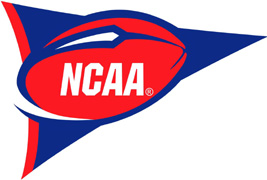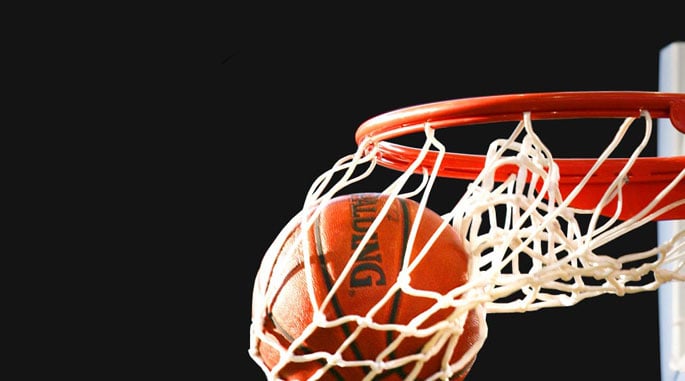Branding Cinderella - How March Madness Success Grows Small School Brands
Up until 2008, tiny Davidson College in Davidson, N.C. was little-known to most outside of the local population and a few die-hard basketball fans who remember the school’s glory days on the court in 1960s. But over a few days in March of that year, the Wildcats, led by future NBA MVP Stephen Curry, made a miraculous run all the way to the Elite Eight of the NCAA men’s college basketball tournament.
Almost overnight, the 1,800-student school was on the national radar, and its brand experienced a boom in exposure that many smaller institutions would love to have.
For these schools, national exposure comes along very rarely (if ever), often in the form of the football team going to a bowl game, an academic breakthrough or, at the top of the exposure list, an invite into the exposure behemoth that is March Madness.
What takes an entire season of success coupled with an unblemished run through their conference tournament culminates in hearing their name called on Selection Sunday (another branded term) and a spot on the bracket. This inclusion provides a seat at the table and in the tens millions of brackets printed, researched, debated, analyzed, filled out and monitored by people around the world.
What better time to build your brand, especially if you are in the middle of a major rebrand and are looking to push your new name/logo forward into mainstream use?
The University of Arkansas at Little Rock (UALR for short) – a school with a self-admitted long-winded name – recently went through a rebranding effort, which included changing its athletic teams naming from the UALR Trojans to simply the Little Rock Trojans. Gone is the University of Arkansas precursor, and here to stay is more of a focus on the school’s home city. The new branding efforts also included updated logos, uniforms, websites, font choices and many more brand elements that are familiar to a corporate rebrand.
What to learn more about how you can build your brand? Let's talk.
Then their men’s basketball team went out and did the new brand the biggest favor it could – steamrolling through the Sun Belt conference regular season and tournament to lock in a spot in the  Big Dance, guaranteeing that those brackets would all include the words “Little Rock” when referring to the school. This not only gained exposure for the new brand, but also helped to quicken the old UALR branding into the history books.
Big Dance, guaranteeing that those brackets would all include the words “Little Rock” when referring to the school. This not only gained exposure for the new brand, but also helped to quicken the old UALR branding into the history books.
The benefits aren’t just to the long-term branding success of the schools. Immediate (and long lasting) financial growth is a common side effect of an appearance in the tournament, which is increased substantially with each round of advancement for the team.
Millions of dollars are distributed by the NCAA to individual conferences based on the success of their member institutions, in addition to the uptick in sponsorships, ticket and merchandise sales, donations and licensing deals. For some schools, a single trip deep into the tournament can help fund their athletic programs for years to come – and this is all in addition to the increase in brand awareness.
So as you fill out your bracket and watch this year’s tournament, keep in mind those schools who you are seeing for the first time, and appreciate their time in the branding spotlight.
Addison Whitney is a global branding firm with a passion for building strong brands.
To learn more about Addison Whitney, visit our website at AddisonWhitney.com, or contact us here.
Everything I Need to Know About Branding I Learned from College Football

Remember the adage everything I need to know I learned in kindergarten? Well let's think about this in terms of branding; that sentence could easily translate to everything I need to know about branding I learned from college football.
As I've written about in a number of past posts creating a memorable brand experience and creating a strong brand loyalty are the hallmarks of a successful brand, and nowhere will you find a company or product that creates the undying passion and loyalty the way college football teams do.
Point-in-case: When I originally started to write a post tying branding and college football together I was going to list the top ten college football brands (admittedly determined by my own biased ranking system) but quickly decided this was a bad idea based on a number of things.
- Problem #1: The thought of ranking my favorite team (Go Gators!) at anything other than #1 made my skin crawl.
Problem #2: SEC schools would undoubtedly take over the top five (heck the entire top ten would probably be SEC schools in my mind) because in addition to being a Florida fan I'm an SEC fan.
Problem #3: Last but certainly not least, I knew that if I started ranking college teams a debate so heated would break out in the office that I feared our walls would come crashing down like goal posts of yesteryear.
So how do college football teams garner such strong brand experiences and loyalty? It's because when it comes to branding, college football gets it. There is a painstaking attention to detail associated with a college football brand from making sure the correct Pantone color is used for every piece of equipment, apparel and brochure to guarantee consistency to nostalgic activities that create positive brand associations. These nostalgic activities can include a school's unique tailgating traditions and pre-game ceremonies. Every detail is considered, and everything is branded.
But why would a school spend so much time, energy, and money to create these branded experiences? It's simple. A school with a strong brand will continue to attract masses of new students each year (subsequently growing its brand's reach every year), students then graduate, become alumni and alumni become donors to the school. Finally there is the revenue and brand impressions generated from trademark licensing. Schools like the University of Texas, University of Florida, University of Michigan, University of North Carolina, etc. generate millions of dollars each year from licensing revenue alone. The number of impressions brands like these get each year from the sale of licensed apparel and equipment only furthers the awareness and loyalty for brands.
Having a strong brand in college football is more than winning games because even in recent slumps of some the greatest brands in college football their fans have remained true and passionate. It's all about the experience and the passion the fans feel for their brand…I mean team.
So repeat after me: everything I need to know about branding I learned from college football.
Method to the Madness

College basketball season might be over but for the NCAA, March Madness is just beginning.
Last October, the NCAA secured exclusive rights to the term "March Madness" from sports and entertainment marketer Intersport. Many in college athletics weren't even aware of the eight-figure settlement until USA TODAY reported the news in May.
According to USA TODAY, Intersport had retained usage rights to "March Madness" through an agreement with the Illinois High School Association in the early '90s. The IHSA and NCAA once shared the trademark. The IHSA gave up its ownership several years ago, but still kept use of the term in connection with high school basketball championships. However the NCAA considered any other use "detrimental to the trademark."
When asked if $17 million-plus may was too hefty a price tag, Randall Scott--Senior Vice President at Addison Whitney--questioned if an equally profitable alternative name even existed for the basketball tournament. "If you called it something else, would it have the same cachet and familiarity?" he asked.
USA TODAY reports that CBS and Turner are paying $10.8 billion over 14 years to carry the the Division I men's basketball tournament, making it NCAA's most critical source of income.
"Is it worth it?" Scott asked. "Absolutely. The real question is if $17 million was the right number."
Campus Equity

......................................................................................................................................................................
As a North Carolina native, I’ve always considered the University of North Carolina at Chapel Hill to be synonymous with “UNC.” It was the first public university in the United States, and the only one to graduate students in the eighteenth century. The institution itself owns the trademark for UNC, as well as the domain name.
The University of North Carolina family of schools actually has 16 different university campuses, most with disparate brands. Some institutions utilize a brand extension approach to identify themselves as part of the University of North Carolina family, including Asheville (UNCA), Charlotte (UNCC), Greensboro (UNCG), Pembroke (UNCP), and Wilmington (UNCW). But with other constituents of the University of North Carolina family adopting a different style of naming (Appalachian State, NC State, East Carolina, etc), it looks like the system needs some consistent brand standards. Does the brand extension approach for some universities imply that they are simply an additional campus of the main school and not their own entity? And do those universities that distance themselves in naming structure from the UNC family heritage do a disservice to their students and alumni?
Read more
Branding a National Pastime

......................................................................................................................................................................
You’d think that after spending 40+ hours a week emerged in other companies’ corporate and product branding initiatives, a person would choose to escape and relax on the weekends. But for 3-4 months a year, my weekend activities incorporate my day job, because I represent a branded tailgate party.
A group of Wake Forest alumni who realized we no longer fit in with the student lot crowd at football games, but who weren’t qualified for parking passes in the lot closest to the stadium with the big donors (the Gold Lot), set up camp in the corner of the Blue Lot that almost touches the Gold Lot. Thus, Almost Gold was born.
